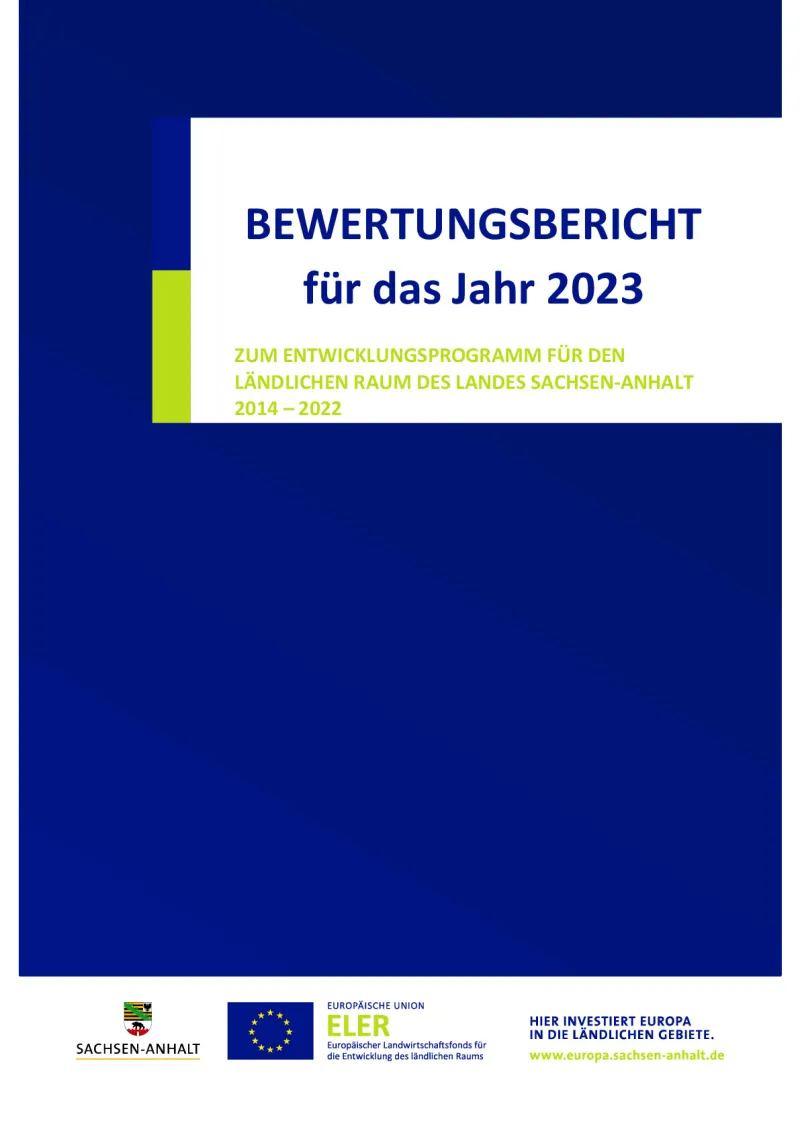Evaluation of the 'Agricultural Investment Programme' database
This evaluation concerns the European Agricultural Fund for Rural Development (EAFRD) measure 'Agricultural Investment Programme' and its role in strengthening agricultural competitiveness while addressing societal challenges.
- Germany
- 2014-2022
- Socio-economic impacts

The evaluation of the EAFRD measure 'Agricultural Investment Programme' (AFP, code M 4.1) considers the following topics:
a) Improving production and working conditions.
b) Optimising and reducing production costs.
c) Increasing the company's value added, with a particular focus on enhancing consumer, animal, environmental, and climate protection.
In addition to the obligatory data from the EAFRD monitoring, an evaluation of the investment concepts of agricultural investment-funded companies is planned.
In view of the upcoming ex post evaluation of the Rural Development Programme (RDP) (reporting in 2026), it was examined to what extent the data from the investment concepts, in combination with other available data sources (EAFRD monitoring, data on the fulfilment of the project selection criteria), are suitable for answering the corresponding evaluation questions.
For the analysis, the data on the investment concepts in the RDPs were compiled, summarised by the monitoring body and handed over to the evaluator in September 2022. Starting at the end of 2022 and completed in 2023, this data was reviewed and evaluated.
Overall, it can be stated that a large proportion of the criteria to be evaluated can be categorised as quantitatively measurable using the collected data and available sources. However, there are differences between the evaluation approaches regarding the Common Evaluation Questions (CEQ) in relation to the objectives at the EU level and the measure-specific evaluation criteria and indicators.
On average, the CEQ at the EU level are more difficult to quantify. Specifically, the evaluations of the questions 'Investment in research, development, and innovation' (CEQ 23) and 'Promotion of innovation' (CEQ 30) lack sufficient quantifiability, as the key figures from investment concepts do not provide clear definitions or boundaries for what constitutes innovation. This clarity is essential to identify which investments have genuinely contributed to promoting innovation.
While the assessment of funding using the criteria from the PAK (project selection criteria) catalogue allows for better quantification, some limitations persist. The evaluation primarily indicates how well the investment is expected to promote innovation, research, and development according to plan, but it does not clarify the extent of actual implementation.
Additionally, the 'increase in the employment rate in rural areas' (CEQ 22) and 'reduction of poverty risks' (CEQ 25) can only be measured indirectly. In this case, conclusions must rely on other key figures, while ignoring additional influencing factors, such as business closures that may increase poverty risk. Although key figures can be utilised to assess the criteria in the PAK catalogue, the same issues of ambiguity arise as previously mentioned.
In terms of findings, the evaluation found that agricultural output per annual work unit in the supported enterprises has increased.
The extent to which agricultural output per annual work unit in the supported enterprises has increased can be seen from the data, since the measured value as such (agricultural production per annual work unit) was collected and the data was recorded in the investment concepts. This can be compared with the measured values from the previous period.
In addition, new production processes (including animal husbandry procedures)/new technologies are introduced in the subsidised companies.
Whether new production methods/new technologies have been introduced in the subsidised companies can be seen, on the one hand, from the “main objectives of the investments to be subsidised” in the investment concepts on spreadsheets I_4 and I_1. On the other hand, new technologies can lead to a reduction in the “actual number of full-time employees” because work processes are carried out by machines.
Furthermore, the report indicates that the market access of subsidised businesses has improved
A possible improvement in market share is measured by the development of the turnover of the subsidised businesses in relation to the development of the turnover of the average of all businesses.
The figures required for this can be found in the investment concepts. Investments carried out as part of a cooperation (if the state aid law basis has come into force) can lead to an improved market position for agricultural businesses as a result of efficiency gains. The assessments of the applications according to the PAK (project selection criteria) catalogue indicate the number of subsidised investments to which this applies. A plausibility check is not possible based on the collected data.
Author(s)
Nicolas Heinrich, AFC Public Services GmbH